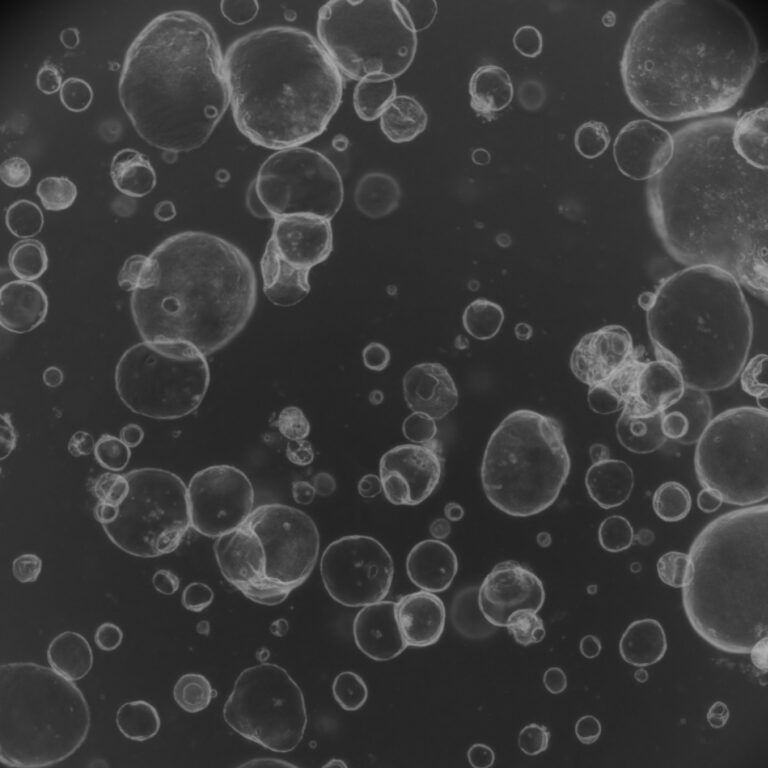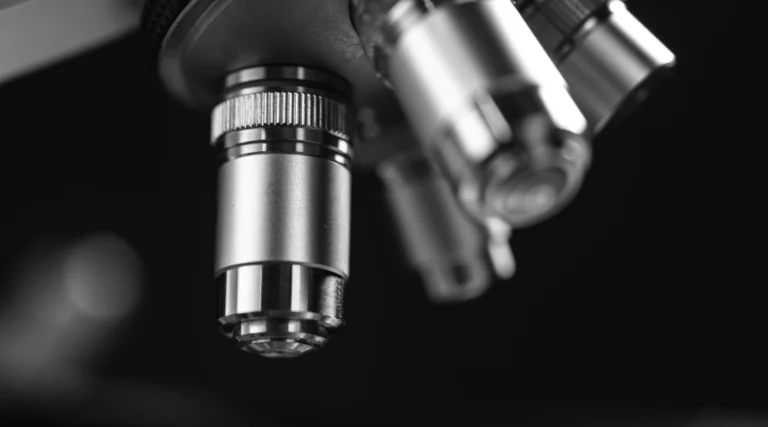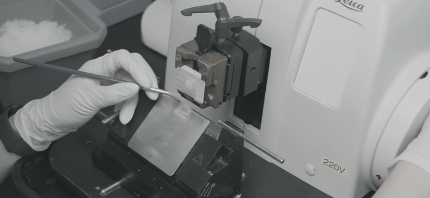In recent years, the term organoid has gained attention in the fields of biomedical research, drug discovery, and personalized medicine. As a cutting-edge technology, organoids are reshaping how scientists approach disease modeling, therapeutic testing, and personalized treatment strategies. Offering a more ethical and human-relevant alternative to traditional models, they align with the FDA’s New Approach Methodologies (NAMs), recently launch of NIH SOM center, and support the development of safer, more effective therapies.
Readmore: What are Organoids? | From Stem Cells to Mini-Organs
A Human-Relevant Platform for Studying Stress, Pigmentation, and Hair Biology
The Stress-Induced Hair Greying Model is an advanced human skin and hair organoid system designed to investigate how psychological and physiological stress influences pigment production. Derived entirely from human pluripotent stem cells, this model captures the full architecture of human skin – including functional hair follicles – and provides a highly predictive alternative to animal-based studies.
This platform enables researchers to study pigmentation biology, follicular aging, and stress-response pathways in a controlled, ethical, and human-specific environment.
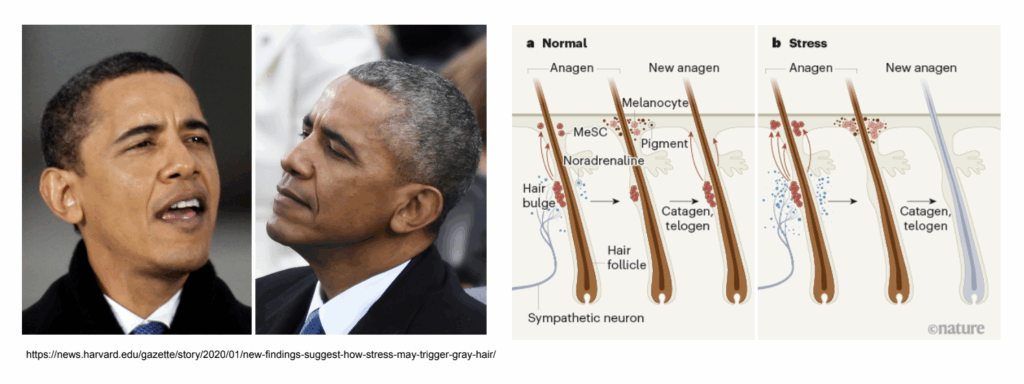
Hair Greying : Hallmark of Stress Induced Aging
Scientific Background
The skin is a complex organ that protects the body from external stimuli such as heat and chemical irritants. While most skin studies rely on mouse models, species differences limit their relevance to human biology. Artificial skin models have emerged as alternatives but often lack key structures like hair follicles and sebaceous glands.
To overcome these limitations, we developed human skin organoids containing hair follicles, based on established hPSC-derived organoid protocols. Using this platform, we created a stress-induced hair greying model in collaboration with OrganoidSciences.
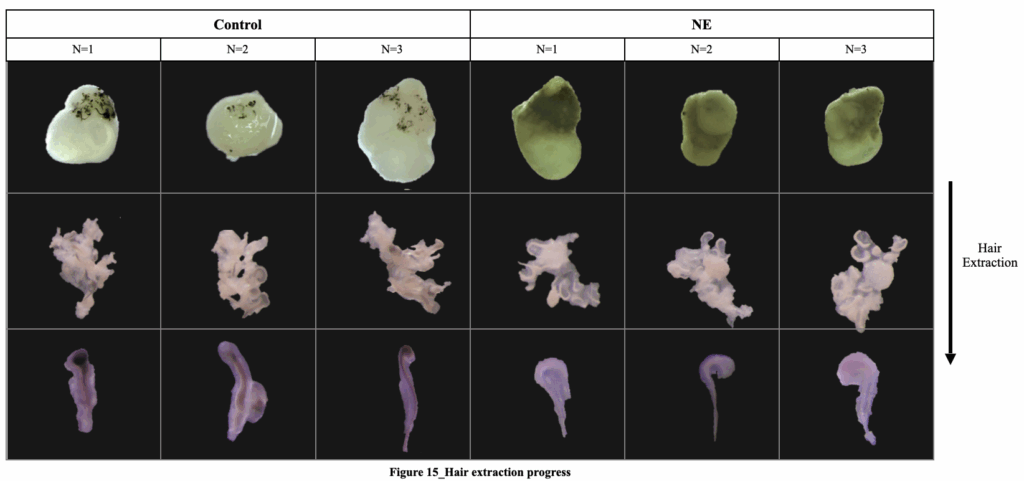
Sequential images showing the isolation procedure of hair shafts from organoid-associated tissue.
Our team generated human skin organoids using established protocols for hPSC-derived skin development. These were further differentiated into Hair Follicle Organoids (HFOs) using the Organoid Culture System developed by Organoid Science Co., Ltd. In collaboration with them, we designed and optimized a stress-induced pigmentation loss model based on known stress pathways.
To replicate the biological cascade associated with stress, we evaluated the effects of Norepinephrine, Cortisol, and Butoxamine. Each compound was tested across defined time windows and concentrations to observe their direct effects on human follicular pigmentation.
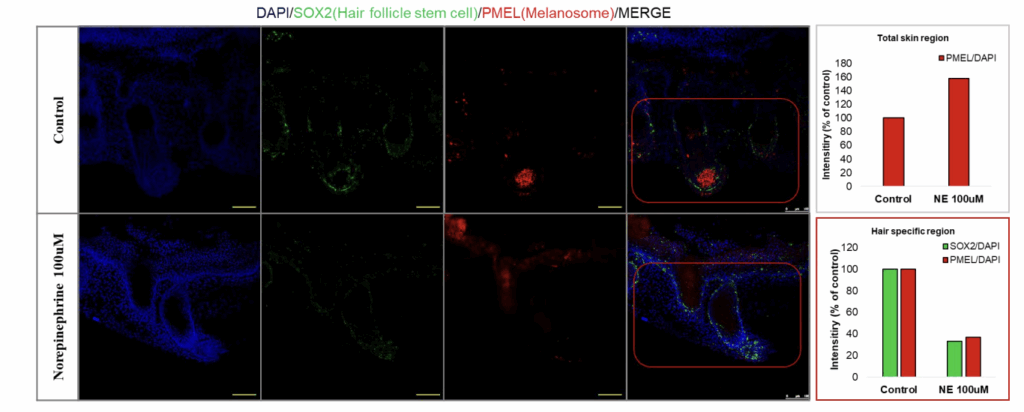
Quantification of hair shaft pigmentation based on ImageJ analysis of hair blackness.
To model gray hair, we examined the morphology of HFOs before and after hair growth. Then, we designed an experiment by administering drugs at each stage of the hair growth process.
STEP 1: HFOs at DIV40, before hair bulb appearance.
STEP 2: HFOs at DIV70, when hair bulb appearance is observed.
STEP 3: HFOs at DIV85, when hair follicle appearance appears.
HFOs were systematically treated, considering the characteristics of each stage.
Through this, we conducted an in-depth analysis of the mechanisms underlying hair growth and gray hair induction. To learn more about this research, please contact our team at info@lambdabiologics.com
Scientific Validation and Recognition
This organoid-based grey hair model gained international visibility when we won the 2025 IFSCC Basic Research Award for uncovering the molecular mechanism of stress-induced hair greying using this system. Our work represents one of the first demonstrations of stress-driven pigment loss reproduced directly in human-derived organoids.
Lambda Biologics, in partnership with Organoid Science, provides access to the Stress-Induced Hair Greying Model and the full Skin & Hair Organoid Platform for research and product development. Learn more about our Skin and Hair Organoid here.
